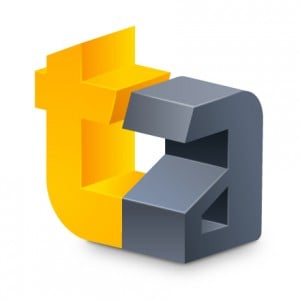 Hello, gentle readers, and welcome to the RPG Reload. This week, we’re continuing our little monthly project looking at the history of handheld RPGs. That means that we will not be taking a look at a specific RPG from the App Store’s past this time around. Last month, we looked at the most successful dedicated handheld of all-time, the Nintendo DS, and the bounty of RPGs it brought with it. Quite impressive for a piece of hardware that most pundits felt had little chance against the opposition. This month, we’re taking a look at the opposition in question, the Sony PlayStation Portable. Although it started its life playing the less-desirable role in a David vs. Goliath match-up, it would in time be the subject of its own feel-good comeback story. Most importantly for us here in the RPG Reload, it was home to a massive library of excellent RPGs.
Hello, gentle readers, and welcome to the RPG Reload. This week, we’re continuing our little monthly project looking at the history of handheld RPGs. That means that we will not be taking a look at a specific RPG from the App Store’s past this time around. Last month, we looked at the most successful dedicated handheld of all-time, the Nintendo DS, and the bounty of RPGs it brought with it. Quite impressive for a piece of hardware that most pundits felt had little chance against the opposition. This month, we’re taking a look at the opposition in question, the Sony PlayStation Portable. Although it started its life playing the less-desirable role in a David vs. Goliath match-up, it would in time be the subject of its own feel-good comeback story. Most importantly for us here in the RPG Reload, it was home to a massive library of excellent RPGs.
In total, this feature will span twelve columns, each one taking a look at a specific era in handheld RPGs. I hope you enjoy reading them as much as I’ve enjoyed researching and writing them! Please let me know what you think by commenting below, posting in the Official RPG Reload Club thread, or by tweeting me at @RPGReload. If you like this project and wish to support endeavors like it, please consider contributing to the TouchArcade Patreon. It’s what makes these kinds of big features possible.
It should go without saying that tabletop, computer, console, handheld, and mobile games are all inextricably tied with each other in various ways. To consider how other platforms contributed to handheld RPGs in these articles would grow them well beyond the scope I’m able to deal with. I’ll be mentioning some influences here and there, but this is basically a disclaimer that I’m aware handheld RPGs don’t exist in a vacuum, in spite of the relatively narrow historical focus of these articles.
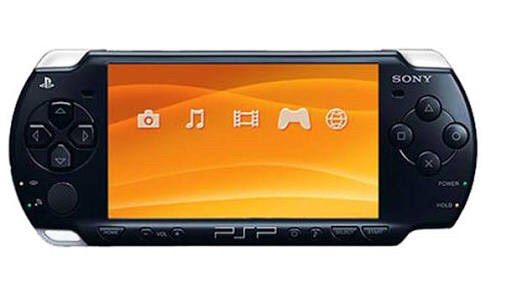
The History Of Handheld RPGs, Part Eight – The Twisting Path Of The PSP
In hindsight, the victory of the Nintendo DS might seem obvious. This was Nintendo in their most dominant market, with a library stuffed full of strong handheld IPs and other powerful Nintendo brands. They had the price advantage, and their name value with the primary handheld market in most of the world was nearly unbeatable. The DS was the kind of machine a kid could safely stuff in their grubby pockets or schoolbags without much fear, and the cartridge format is considerably more suited to the needs of handheld gaming than optical media. They had the Pokemon, for crying out loud. How could they lose?
None of that mattered on May 11th, 2004, when Sony officially unveiled the Sony PlayStation Portable to the public for the very first time. As SCE head (now Sony’s top dog) Kaz Hirai outlined its wide array of features, another employee showed off its stylish form factor. In comparison to the somewhat shabby-looking prototype version of the Nintendo DS that Nintendo had shown off, the PSP looked like it came from the future. Among its obvious features, the large screen and presence of an analog stick jumped out the most. The PSP’s use of a disc-based format, the UMD, seemed to echo Sony’s entry into the video game market. In that battle, Nintendo’s insistence on sticking with the traditional cartridge format had given Sony a major advantage in terms of offering bigger games with greater media capabilities. Of course, going with a disc-based format had major drawbacks for handheld devices, but few focused on that at the time.
 Sony also leveraged one of their biggest advantages: their excellent relations with third-party publishers. Even companies who had shown little interest in the handheld market before, such as Electronic Arts and Rockstar Games, were on-board. Clearly, software was not going to be an issue. To hammer the point home, Sony showed off a sizzle reel of games that included well-known IPs like Wipeout, Metal Gear, Ape Escape, Ridge Racer, and more, all of them looking not far off graphically from their PlayStation 2 incarnations. But the PSP was said to be far more than just a game machine. The UMD format would allow the machine to host movies, music, and more. It’s comical now to look back and watch Sony dedicate a few precious minutes of their presentation to showing a Spider-Man 2 trailer in its entirety running on a PSP demo unit, but at the time, the idea of watching the latest movies in high resolution on a handheld device was an exciting one.
Sony also leveraged one of their biggest advantages: their excellent relations with third-party publishers. Even companies who had shown little interest in the handheld market before, such as Electronic Arts and Rockstar Games, were on-board. Clearly, software was not going to be an issue. To hammer the point home, Sony showed off a sizzle reel of games that included well-known IPs like Wipeout, Metal Gear, Ape Escape, Ridge Racer, and more, all of them looking not far off graphically from their PlayStation 2 incarnations. But the PSP was said to be far more than just a game machine. The UMD format would allow the machine to host movies, music, and more. It’s comical now to look back and watch Sony dedicate a few precious minutes of their presentation to showing a Spider-Man 2 trailer in its entirety running on a PSP demo unit, but at the time, the idea of watching the latest movies in high resolution on a handheld device was an exciting one.
Sony described the machine as the “Walkman of the 21st Century", and just about everyone was ready to believe it. The only question hanging in the air after that stellar presentation was how much the thing would cost. It looked a generation ahead of the Nintendo DS, let alone the existing Game Boy Advance. In October of 2004, the first pricing information was revealed, setting a price of 19,800 yen for the system for its coming Japanese launch in December. Only 5,000 yen (~$50) more than the Nintendo DS, the pricing gap was small enough that most people had the crown shined up and ready for the PSP before either system had launched. So what happened?
Well, to be blunt, Sony miscalculated the market in a big way. The PSP was primarily aimed at Sony’s main demographic, which at that time was just about everyone who played games except kids. Its form factor and high-end graphics especially appealed to young adult core gamers, which to be fair was a very large group of potential customers. Traditionally, those gamers hadn’t been a large part of Nintendo’s handheld market, and I suspect Sony saw them as the toehold that would let them break open the handheld industry in a big way. The problem was that the hardcore market hadn’t been avoiding handhelds because of a lack of a Sony-like option. They had been avoiding handhelds because on a fundamental level, the majority of that group were tech-conscious and wanted to play the best-looking games on a big TV, not a little brother version on a small screen. Worse, outside of Japan, a large part of Sony’s core demographic had no practical use for a handheld.
 The multimedia features that had been a big part of Sony’s marketing plan for the machine ended up not gaining much traction with customers. After an initial boom, store shelves were soon clogged with excess stock of Rob Schneider movies on UMD, among other monstrosities. It’s not that there wasn’t a market for those features, mind you. It’s just that another company was biting it more effectively than Sony. You might be reading this very article on a device from that company, in fact. As the Nintendo DS caught on with a whole new kind of audience thanks to its touch screen and innovative software, the advanced PSP ironically began to look very dated. It certainly didn’t help matters in the slightest when people quickly figured out how to hack the machine wide open using one of its most popular titles as a backdoor. Software sales had already been struggling, but adding simple piracy to the equation choked them even further.
The multimedia features that had been a big part of Sony’s marketing plan for the machine ended up not gaining much traction with customers. After an initial boom, store shelves were soon clogged with excess stock of Rob Schneider movies on UMD, among other monstrosities. It’s not that there wasn’t a market for those features, mind you. It’s just that another company was biting it more effectively than Sony. You might be reading this very article on a device from that company, in fact. As the Nintendo DS caught on with a whole new kind of audience thanks to its touch screen and innovative software, the advanced PSP ironically began to look very dated. It certainly didn’t help matters in the slightest when people quickly figured out how to hack the machine wide open using one of its most popular titles as a backdoor. Software sales had already been struggling, but adding simple piracy to the equation choked them even further.
Then there’s the hardware itself. It was beautiful, to be sure, but it was so beautiful that many people were afraid to take it out of the house. The screen was huge, and with nothing to protect it, that size only made it even more prone to scratches. Putting an analog nub on the system was a good idea, but putting only one on there made it difficult to translate the popular control set-ups most 3D games of the time were using. The screen was gorgeous, but the refresh rate was poor on initial models, causing some nasty blur on many games. Then there’s the UMD drive, which might have been the biggest albatross around the neck of them all. Yes, it allowed for huge games filled with rich media. It also ate at the battery life and added loading time to games that hurt the machine’s potential for quick pick-up and play. As flash memory capacity quickly became bigger and prices became cheaper, there weren’t many advantages left to using UMDs.

Even with all of that, the PSP did fairly well for itself. Sure, it lost to the Nintendo DS, but so did literally every other piece of dedicated gaming hardware apart from the PlayStation 2. It ended up selling more than 80 million units worldwide, putting it just behind the Game Boy Advance and miles ahead of any other non-Nintendo handheld. It was particularly successful in Japan, where it struck a chord with teenage boys. Smaller Japanese publishers found an eager market on the platform for niche games, allowing them to stave off the inherent risks of developing on HD consoles like the PlayStation 3 and Xbox 360. As a result, the system became home to a huge number of RPGs, particularly in its later years. It might not have revolutionized the market the way everyone thought it would, but it’s also nowhere near the loser many have painted it as.
Interestingly enough, the PSP’s turnaround had very little to do with Sony themselves. To their credit, they supported the machine with high-quality first-party releases for several years, but in the end, the PSP was saved by Capcom, of all companies. Their Monster Hunter series had seen modest success at best when it launched on the PlayStation 2, but when they began to port the series to PSP, they found a much more willing audience. By the time they released Monster Hunter Portable 2nd G (known outside Japan as Monster Hunter Freedom Unite), the series had become an outright phenomenon in Japan. Suddenly, more and more people were carrying PSPs on the trains, engaging in impromptu multiplayer rounds with their fellow commuters. Monster Hunter became big in the way few non-Nintendo properties have ever managed in Japan, and for that generation, it was exclusive to Sony’s handheld. Many other third parties were able to make hay from the audience Monster Hunter attracted, giving the PSP a vital second wind that carried the machine through the rest of the generation.
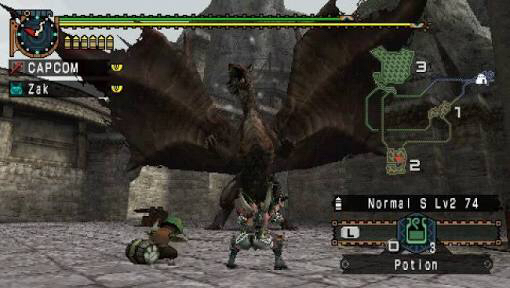
The RPG line-up on the PSP is pretty interesting. It’s an eclectic mix that represents the system’s changing fortunes quite well. In the beginning, we see a lot of ports of console RPGs and the occasional well-funded original release. Then, as the system starts to struggle, it mostly gives way to low-budget RPGs from niche publishers. After Monster Hunter hits, we see more high-budget original products and a ton of RPGs influenced or inspired by Capcom’s huge hit. After that, it settles in for its death spiral with a few more ports and low-budget RPGs. The result is an RPG library that has a little something for every kind of RPG fan, though some will leave more satisfied than others.
In 2005, the system’s first year, there were a couple of iffy original titles, like Kingdom Of Paradise and Untold Legends, but most of its initial RPGs were ports, including Western titles like X-Men Legends 2 and Japanese games such as Princess Crown, Tales Of Eternia, and Devil Summoner. Beloved Japanese publisher Nihon Falcom had yet to make a direct commitment to the system, but questionable ports of some of their Legend Of Heroes games were released by Namco. The next year, 2006, saw even more ports. Falcom themselves ported their popular Legend Of Heroes: Trails In The Sky to the platform, though its English release wouldn’t come for many years after. Nippon Ichi Software saw excellent success with a port of their strategy-RPG Disgaea, and on the Western end of things, a port of Marvel Ultimate Alliance and an original title in the Dungeon Siege series were released.
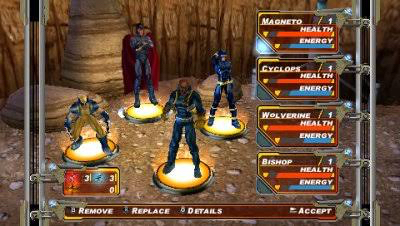
Sadly, Sony Computer Entertainment Of America had some bizarre rules in place for third parties, so many RPGs never saw release in the United States. In particular, there was a rule that PlayStation 1 ports couldn’t be released without significant improvements, which meant games like Tales Of Eternia, Breath Of Fire 3, and most painfully, Suikoden 1&2, were either relegated to Europe-only releases or never released in English at all. It’s noteworthy that virtually none of these RPGs made any attempt to appeal to the Pokemon audience, instead aiming at an ostensibly older crowd. It’s clear that even from the start, not many companies expected kids to own PSPs. That should have been a bad warning sign for Sony, looking back.
By 2007, the PSP was in a bad way outside of Japan. Western third parties were starting to drop away rapidly, and even in Japan, things weren’t looking great. Monster Hunter Portable 2nd released in February in Japan and things started to pick up in that region for the struggling system. The four-player local multiplayer was a big hit, showing that Japanese were increasingly becoming interested in multiplayer games, if only in person at this point in time. This was also the year that Square Enix’s first big salvo of titles arrived. Special anniversary editions of Final Fantasy 1 and Final Fantasy 2 were released, along with a port of Final Fantasy Tactics. These versions served as a basis for the later mobile ports.

The big gun from Square Enix, however, was Crisis Core: Final Fantasy VII, an action-RPG prequel to the mega-hit that put the franchise on the international map. It was one of the more lavishly-produced PSP titles, and remains one of the best reasons to own the actual hardware to this day for RPG fans. While it told a big tale, the gameplay itself was tailor-made for portable play, offering short missions that players could take on in between the bigger story set-pieces. This mission-based structure, also seen in the Monster Hunter games, soon became a big part of handheld RPGs originating in Japan and is a component of today’s popular social RPG genre.
Another significant release in 2007 was D3 Publishing’s Puzzle Quest: Challenge Of The Warlords, which released across a variety of platforms including the PSP. Its influence on modern mobile RPGs is significant and clear. By combining quick puzzle gameplay with an overarching RPG meta-game, developer Infinite Interactive might just be the originator of today’s social RPGs like Puzzle & Dragons and Monster Strike. These kinds of RPGs also proved quite adaptable to free-to-play mechanics, which likely contributes to their dominance in the current mobile market, a fate which even Puzzle Quest itself has not evaded.

Monster Hunter Portable 2nd G was the big news in the following year, 2008. Square Enix also renewed their efforts on the platform, releasing remakes of the first two Star Ocean games and the wild Final Fantasy cross-over fighting game, Dissidia. The first of the Monster Hunter clones arrived this year, as well. With a little bit of retooling, Phantasy Star Online was easily adapted to fit the tastes of the new crowd of multiplayer action-RPG lovers who bought the system. Phantasy Star Portable released to big numbers in Japan, reviving a brand that had seemed to be going dormant after a couple of big misses.
Fashionably late to the party, the Ys series came to the PSP in full force after an earlier port of Ys 6 by Konami. Falcom ported Ys 1&2 Chronicles and Ys: Oath In Felghana to the system in preparation for Ys Seven, which would be debuting on Sony’s handheld. SEGA came back to the well quickly with a follow-up to Phantasy Star Portable, while Nippon Ichi Software readied a port of Disgaea 2. This year also saw the release of the delightful Half-Minute Hero, a condensed RPG that seems to predict the kind of experiences that would soon become common on mobile phones.
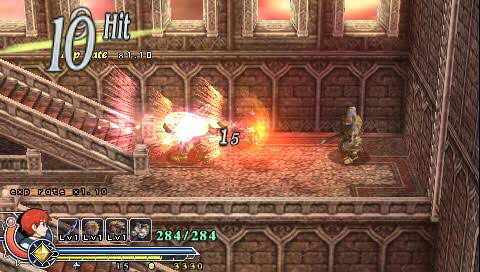
These kinds of quirky titles released more and more as the PSP entered its later years. 2010 saw the release of the excellent Z.H.P. and Cladun, just as a couple of examples. Square Enix also unloaded a couple of major releases in 2010. An original Kingdom Hearts game entitled Kingdom Hearts: Birth By Sleep released to rave reviews from press and fans alike, while Parasite Eve sequel The 3rd Birthday received almost the opposite reception. Sadly, the weak sales of The 3rd Birthday outside of Japan were a major contributor to Square bowing out of further PSP localizations, depriving players of an English version of 2011’s Final Fantasy Type-0 for many years.
Atlus, on the other hand, was settling in nicely. Remakes of Persona 1 and 2, along with a slightly cut down port of Persona 3 were released on the system across 2010 and 2011, and their success almost certainly led to one of PSP successor PlayStation Vita’s best RPG releases. The year 2011 also saw the long-awaited English release of Trails In The Sky, but its weak sales performance meant English players wouldn’t see the cliffhanger ending resolved until 2015. The other major release of 2011 was a remake of the classic strategy-RPG Tactics Ogre: Let Us Cling Together. It’s a great little gem that makes a lot of sensible improvements in its PSP version. Square also released a couple more Final Fantasy ports for the system before packing it in.

The PSP’s successor released in Japan in late 2011, and you might think that would be the end for the PSP. Software releases certainly slowed down, especially outside of Japan, but the scrappy little system refused to go quietly in the night. I’d say 2013’s Summon Night 5 was one of the last noteworthy RPG releases on the system in Japan, but localizations from companies like XSEED and Gaijinworks are still trickling out as of January 2016. With the announcement of the English version of Trails In The Sky 3rd being PC-exclusive, however, it appears that at least XSEED is finished with the system. For their part, Gaijinworks has at least one more release in the queue, dungeon crawler Class Of Heroes 3. Maybe 2017 will finally be the first year since 2005 without a new PSP game hitting the market. Not bad for a runner-up.
Of course, just looking at retail releases misses part of the RPG picture on PSP. The system could also connect to PSN and access a variety of digital-only games. There weren’t a lot of RPGs that were distributed in this way, but ports of some of Kemco’s mobile games and Gamevil’s Zenonia were released for the PSP in this way. It’s also worth mentioning that the PSP eventually had access to a significant number of wonderful RPG classics from the original PlayStation’s library. You’re almost certain to find a treasure or two that you haven’t played before among the large selection, and they play wonderfully on the system.

The PlayStation Portable allowed developers to bring experiences to handheld that closely mirrored those of the contemporary consoles for the first time. The reaction to those games, and the ensuing attempts to reshape them into something that fit the way handheld players liked to play, had a major impact on handheld RPGs across the board. It also popularized cooperative multiplayer RPGs, at least in Japan, blazing a trail that smartphones would later follow to great results. Finally, the low development costs and presence of PSN as a means of distribution allowed publishers and developers to release riskier titles that toyed around with traditions. The PSP hardware might have been designed for traditional console experiences, but the community it built proved to be surprisingly creative and innovative. In a lot of ways, the PSP feels like it straddled the line between traditional Japanese RPGs and the newer streamlined style that dominates today.
It seems very likely that there won’t be another dedicated handheld from Sony. The market has changed a lot since the PSP crashed into the room, and even Nintendo seems to be precariously balancing on slowly disappearing ground. Sony and Nintendo were so busy keeping an eye on each other, by the time they noticed the impending threat, it was too late to stop it. That deadly market-eating beast? Well, it’s probably why you came to TouchArcade in the first place, and we’ll be taking a look at its first few years in the next chapter.
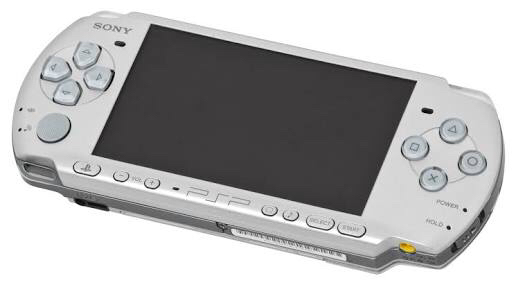
Shaun’s Five For The PSP Era
For each part of this series, I’ll be selecting five notable or interesting titles to highlight. If you’re looking to get a good cross-section of the era in question, these picks are a good place to start.
Puzzle Quest – It’s almost impossible to overstate the importance of this game in the development of handheld RPGs. Its marriage of tile-matching puzzle gameplay with heavy RPG mechanics laid out a blueprint that would eventually lead to the birth of the social RPG, the current dominant form of RPG in the handheld market. The computer cheats like its life depends on it, but it’s still a very fun game anyway. Even though there have been many sequels, I don’t feel like any of them have presented quite as enjoyable a game as the original Puzzle Quest did.
Legend Of Heroes: Trails In The Sky – Many of the PSP’s best RPGs are ports, but for English speakers, the PSP was the first chance to play those games. Take the case of Legend Of Heroes: Trails In The Sky. It’s a fantastic RPG with a massive script originally released on PC at a time when Japanese publishers rarely even thought of PC. Those that did, like Falcom, almost never translated their titles for international markets. Trails In The Sky is part of a larger series and while it may not have sold terribly well on PSP, its existence paved the way for the English PC version that secured the future of localizations for the Trails franchise. It’s a really great RPG, just be prepared to dive into the sequel as soon as you finish it.
Crisis Core: Final Fantasy 7 – The overbearing presence of Japanese pop star Gackt is a bit much for some fans, but overall, I enjoyed Crisis Core‘s take on Final Fantasy 7‘s world quite a bit. Zack is, in my opinion, a better protagonist than Cloud, and playing this game actually helped me understand the bizarre plot of Final Fantasy 7 a little more. You’ll have to play this one on UMD, as licensing issues with the ending credits song have prevented Crisis Core from getting a digital release. It’s worth the trouble, though.
Tactics Ogre: Let Us Cling Together – If you enjoyed Final Fantasy Tactics, you owe it to yourself to play this excellent remake of Tactics Ogre, its direct predecessor. While the base game is outdated by Final Fantasy Tactics in some ways, the many enhancements added for the PSP version make it one of the more approachable Japanese-style SRPGs around. This one seems like it would be a slam-dunk on mobile, but Square Enix moves in mysterious ways.
Ys: Oath In Felghana – Meanwhile, if action-RPGs are your thing, the PSP has a whole bunch of Ys games, including an outstanding port of Oath In Felghana. It’s the best game in the series, in my opinion, and it plays like a dream on the PSP. This version is also the first official English release of the game, though it’s now available on PC, as well. Simply a great game in every respect, and yet another way Falcom showed their support of Sony’s handheld.
That’s all for part eight of our on-going History Of Handheld RPGs feature. Please let me know what you think by commenting below, posting in the Official RPG Reload Club thread, or by tweeting me at @RPGReload. As for me, I’ll be back next week with a look at Ravensword: Shadowlands ($6.99). Thanks as always for reading!
Next Week’s Reload: Ravensword: Shadowlands